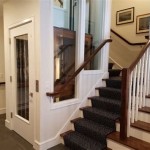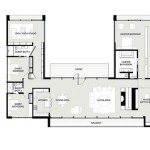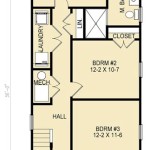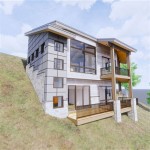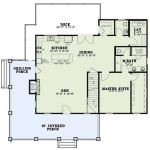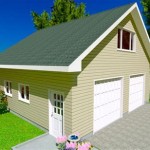House Plans With Panic Rooms: Ultimate Guide for Enhanced Security and Peace of Mind
In an era marked by increasing concerns over safety and security, homebuyers and homeowners alike are seeking residences that offer heightened levels of protection. Among the most effective measures for safeguarding your family and assets is the inclusion of a panic room in your house plans.
Panic rooms are specialized, reinforced chambers designed to provide a secure refuge during emergencies or threats. They are typically concealed within the house's structure and equipped with features that allow occupants to withstand an intruder or other dangers.
Benefits of House Plans with Panic Rooms
Incorporating a panic room into your house plans offers numerous advantages:
- Enhanced Security: Panic rooms provide a safe haven during break-ins, home invasions, or other threatening situations.
- Increased Peace of Mind: Knowing that you have a designated safe space in case of an emergency can alleviate anxiety and provide a sense of comfort.
- Protection for Valuables: Panic rooms can be equipped with safes or vaults to protect important documents, jewelry, and cash from theft or damage.
- Disaster Preparedness: In the event of a natural disaster or other emergencies, a panic room can serve as a shelter from the elements or potential hazards.
Design Considerations for Panic Rooms
When planning a house with a panic room, there are several important factors to consider:
- Location: Panic rooms are typically concealed within the home's structure, often near bedrooms or other high-value areas.
- Size: The size of the panic room should accommodate the number of occupants and any necessary equipment.
- Reinforcement: The panic room should be constructed with reinforced walls, doors, and windows to withstand forced entry or structural damage.
- Communication: Panic rooms should be equipped with a dedicated phone line or intercom system to communicate with emergency services.
- Ventilation: Proper ventilation is crucial to ensure adequate air supply and prevent suffocation.
Technological Features for Panic Rooms
Modern panic rooms often incorporate advanced technological features to enhance security and functionality:
- Biometric Access: Fingerprint scanners or facial recognition can provide secure and convenient access to the panic room.
- Motion Sensors: Motion sensors can detect intruders and trigger alarms or alert occupants.
- Surveillance Cameras: Cameras can provide a visual record of events inside or outside the panic room.
- Gas Detection: Gas detectors can monitor the air for potentially harmful gases, such as carbon monoxide.
- Water Filtration: Water filtration systems can provide a source of clean water in case of an emergency.
Conclusion
House plans with panic rooms offer a comprehensive approach to home security, providing peace of mind and enhanced protection for families and assets. By considering the design considerations and technological features discussed in this article, you can create a safe and secure haven within your own home.
If you are considering incorporating a panic room into your house plans, it is highly recommended to consult with a licensed architect or home security expert. They can assist you in designing and constructing a panic room that meets your specific needs and budget.

Plan 59527nd Lovely 4 Bed Home Design With Safe Room

One Level Hill Country House Plan With Safe Room 48600fm Architectural Designs Plans

Elegant One Story House Has Safe Room Plan 4906

Building Peace Of Mind Safe Rooms And Basements

1 Story Barndominium Style House Plan With Safe Room 623116dj Architectural Designs Plans

Pin Page

4 Bed French Country Home Plan With Safe Room 70636mk Architectural Designs House Plans
Fourplans Homes With Safe Rooms Builder

Ultimateplans Com House Plan Home Floor Number 101159

Craftsman Plan 4 469 Square Feet 5 Bedrooms Bathrooms 110 01078

